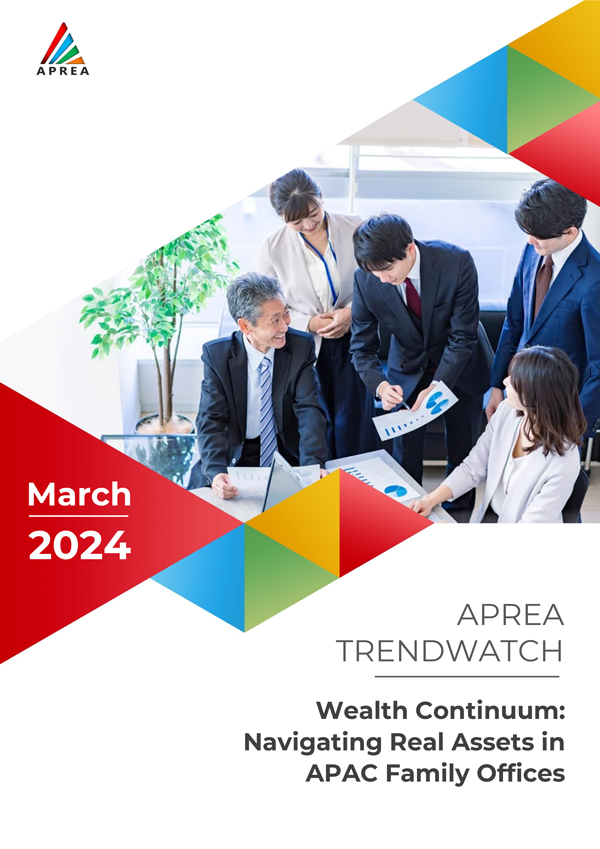In the Asia Pacific region, family offices have become significant players in infrastructure and real assets, leveraging their wealth to strategically invest amidst evolving market dynamics. Despite challenging conditions, 58% of family offices in the region reported asset growth, with a notable focus on increasing investments in real estate and private debt. These trends were further highlighted in a panel discussion organized by APREA, where experts emphasized the importance of adapting to changing interest rates and building operational efficiencies in investment decision-making.

Asia Pacific has emerged as a dominant source and destination for global capital. Singapore, Hong Kong, China and Japan were among the top ten sources of global cross border capital in H2 2023. Notably, Singapore and Hong Kong were the second and thirds biggest sources of global cross border capital respectively.
Japan, China, Australia and Singapore were among the top ten destinations for global cross border capital in H2 2023.
Asia Pacific performed best in 2023, with investment volumes reaching 91% of their 10-year average. While North America reached 68%, the Europe, Middle East and Africa (EMEA) region reached just over half (52%) of its 10-year average. In 2023, global investment volumes were among the lowest since the global financial crisis with overall investment volumes at 75% of the 10-year average.
The region’s performance was backed by a significant pick-up in investment activities in Q4, primarily in December, signalling the region’s strong potential for recovery in the year ahead. Colliers’ global report highlighted that the forecasts for 2024 and 2025 present Asia Pacific’s strong growth story.
Download the Report Read MoreThe pandemic spurred a sharp rise in e-commerce, causing global supply chain vulnerabilities that underscored the need for greater resiliency. Third-party logistics (3PL) warehouse operators had to optimise supply chain operations, cut costs and utilise new technologies. 3PLs have been highly effective, now dominating demand for industrial & logistics space, impacting real estate fundamentals and warehouse building design, and leading to further industry evolution such as fourth-party logistics (4PL) and reverse logistics.
3PLs have grown globally:
This report was originally published in https://www.cbre.com/insights/reports/the-global-outsourcing-of-warehousing
Download the Report Read MorePlease find below the rebalancing results (effective 18 March 2024 start of trading) for the:
2024 is anticipated to be a more dynamic year for the Asia Pacific real estate industry. The ability to act quickly, dig deeply into markets and sectors to identify value, and forge productive partnerships will be key to making the most of the region’s resurgence.
Colliers' 2024 Investor Insights - Country Spotlight Series aims to provide real estate investors and owners with unique insights into the year ahead and a deep understanding of each market across the region. As investors evaluate their portfolios against the fast-evolving global landscape, this series provides a strategic view on the key market dynamics, outlook and opportunities, along with actionable insights across asset classes in Asia Pacific.
View the Reports Read More